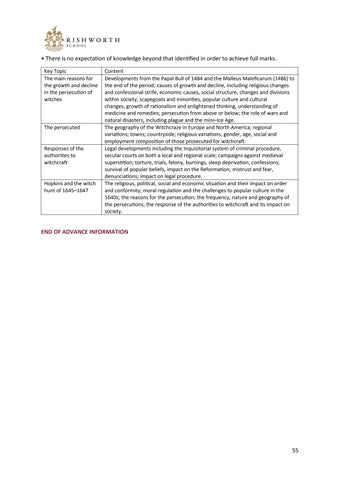• There is no expectation of knowledge beyond that identified in order to achieve full marks. Key Topic The main reasons for the growth and decline in the persecution of witches
The persecuted
Responses of the authorities to witchcraft
Hopkins and the witch hunt of 1645–1647
Content Developments from the Papal Bull of 1484 and the Malleus Maleficarum (1486) to the end of the period; causes of growth and decline, including religious changes and confessional strife, economic causes, social structure, changes and divisions within society, scapegoats and minorities, popular culture and cultural changes, growth of rationalism and enlightened thinking, understanding of medicine and remedies; persecution from above or below; the role of wars and natural disasters, including plague and the mini–Ice Age. The geography of the Witchcraze in Europe and North America; regional variations; towns; countryside; religious variations, gender, age, social and employment composition of those prosecuted for witchcraft. Legal developments including the Inquisitorial system of criminal procedure, secular courts on both a local and regional scale; campaigns against medieval superstition; torture, trials, felony, burnings, sleep deprivation, confessions; survival of popular beliefs, impact on the Reformation; mistrust and fear, denunciations; impact on legal procedure. The religious, political, social and economic situation and their impact on order and conformity; moral regulation and the challenges to popular culture in the 1640s; the reasons for the persecution; the frequency, nature and geography of the persecutions; the response of the authorities to witchcraft and its impact on society.
END OF ADVANCE INFORMATION
55

